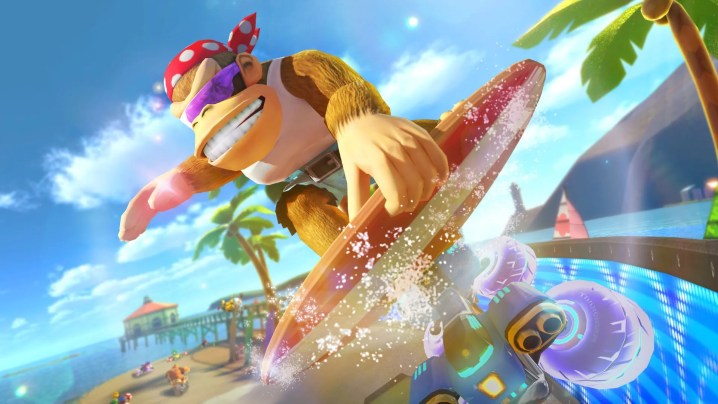I never truly realized how genius Nintendo’s Mario Kart formula is until I got borderline obsessed with mastering Mario Kart 8 Deluxe. Like Mario Kart Wii, this is a game where you can either pick up casually or go hardcore , learning everything to try to increase your online VR points and reach higher ranks.
If that was enough to make Mario Kart Wii the best entry in the series for its time, Mario Kart 8 Deluxe has taken the series to new heights throughout its nearly decade-long life span. With its final Booster Course DLC out now, Nintendo has finally cemented the kart racer as one of the best multiplayer games of all time. Period.
Reaching perfection
Mario Kart 8 was originally released on Nintendo’s Wii U system and made a splash as one of the system’s big sellers — for all that’s worth. When the Nintendo Switch released, Nintendo quickly capitalized by rereleasing Mario Kart 8 with a new Deluxe subtitle. That would bring new content and modes, as well as a long-tailed DLC plan once it became clear it was going to be one of the Switch’s biggest hits.
Add-ons have gone a long way toward keeping the racer fresh. That’s especially been true with an influx of fan-favorite characters over the course of several DLCs. While the original Mario Kart 8 dropped with a pretty slim roster, Nintendo picked up that dropped ball with future updates. Why play as filler racers like Pink Gold Peach when you can use Link, Animal Crossing’s Isabelle, and King Boo? Nintendo kept that momentum rolling all the way into its sixth and final DLC, adding Funky Kong, Pauline, and Diddy Kong to the mix.

Along with new characters, Deluxe would eventually add just about every great track in the series’ history (alongside a few dudes). With a racing series this long-running, there are no-shortage of great tracks to choose from. Continual cup additions would bring hours of content for those who like to master courses. Even if the final package left us with some stinkers, like the majority of the Mario Kart Tour city tracks, we’ve got just about every top-tier Mario Kart Wii course in the game now.
While I love finally being able to use Pauline in an unmodded Mario Kart game and can’t help but vote for Wii tracks every time they pop up online, my favorite additions are the ones you have to play to understand. Mario Kart 8 Deluxe has always been a game where smart character and vehicle part combinations reign supreme online. That’s still somewhat the case, but Nintendo has made more combinations viable over time. You don’t see everyone online rolling with Waluigi and Wiggler wheels anymore.
Nintendo has gone out of its way to make Mario Kart 8 Deluxe a way more balanced and casual-friendly product while not ruining it for highly competitive players. Not only were characters and vehicle parts rebalanced enough to allow for way more variety online, but even items have been tweaked. Bagging — a very popular strategy that entailed staying in low positions to collect multiple strong items like Bullet Bills, stars, and lightning bolts in order to “bag” them into high positions — has since been removed. And without it, Mario Kart has become a game where you actually have to race to win once more.

These changes come together to make Mario Kart 8 Deluxe into a game perfect for not only hardcore competitors, but those just playing for fun as well. It’s even more a game of equal opportunity than it was before. You aren’t locked to certain characters, combos, or strategies. No matter what your skill level is, there are always challenges to work around that level the playing field a bit.
I’ve never played a game that feels more open to everyone having fun until Mario Kart 8 Deluxe. While games like Super Smash Bros., Fortnite, or even Mortal Kombat seek to open themselves up for an audience clash across skill levels, none hit the nail on the head like this. With Mario Kart 8 finally fading into our rearview, I’m confident in calling it the best multiplayer experience I’ve ever played.
Mario Kart 8 Deluxe and its entire Booster Course DLC suite is available now on Nintendo Switch.



